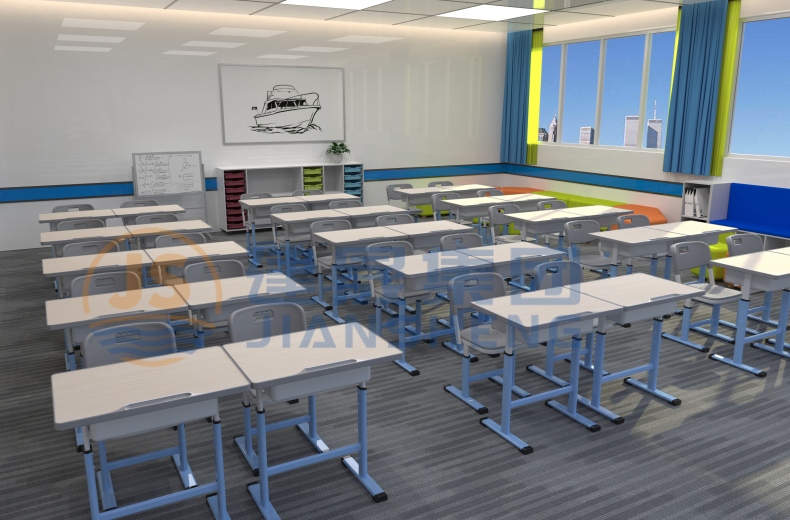- Home
- About Us
- Service
-
Solution
- Kindergarten Classroom
- Primary School Classroom
- Secondary School Classroom
- High School Classroom
- College Classroom
- Training Classroom
- Music Classroom
- Art Classroom
- Lecture Classroom
- Computer Classroom
- Library
- Principal Office
- Administration Office
- Meeting Room
- Reception Room
- Public Area
- Teachers' Office
-
Products
- Case Study
- News
- VR Designs
- Video Center
- JS Lab
- Contact Us

The Hidden Impact: Unveiling the Environmental Effects of Materials and Production Processes in School Furniture
2024-04-29 22:00
The Hidden Impact: Unveiling the Environmental Effects of Materials and Production Processes in School Furniture
As schools strive to create conducive learning environments for students, the furniture within classrooms plays a pivotal role. However, the materials and production processes used in crafting school furniture often have far-reaching consequences for the environment. From desks and chairs to bookshelves and cabinets, every piece of furniture leaves an indelible mark on the planet. In this article, we explore how the materials and production processes of school furniture affect the environment, shedding light on a crucial yet often overlooked aspect of sustainability in education.
The production of school furniture involves a series of interconnected processes, each of which has environmental implications. From the extraction of raw materials to manufacturing, transportation, and disposal, every stage of the furniture lifecycle contributes to its overall environmental footprint.
Traditional school furniture is often crafted from materials such as wood, metal, and plastics. While these materials offer durability and functionality, their extraction and processing can have detrimental effects on the environment. Deforestation, habitat loss, and pollution are just some of the consequences associated with the sourcing of raw materials for furniture production.

The manufacturing of school furniture involves energy-intensive processes, including cutting, shaping, assembly, and finishing. These processes can generate greenhouse gas emissions, waste, and chemical pollutants if not managed sustainably. For example, the use of solvent-based finishes and adhesives can release volatile organic compounds (VOCs) into the atmosphere, contributing to air pollution and indoor air quality issues in schools.
The transportation of raw materials, components, and finished products adds another layer of environmental impact. Long-distance transportation increases fuel consumption and emissions, particularly if fossil fuel-powered vehicles are used. Moreover, the packaging materials used to protect furniture during transit can generate additional waste if not recyclable or biodegradable.
At the end of their lifespan, school furniture must be disposed of or recycled responsibly. Furniture made from non-biodegradable materials may end up in landfills, where they contribute to long-term environmental degradation. Alternatively, furniture designed for disassembly and recycling can minimize waste and promote resource recovery.

In recent years, there has been a growing awareness of the need for sustainable solutions in the production of school furniture. Manufacturers are increasingly exploring eco-friendly materials, such as bamboo, recycled plastics, and FSC-certified wood, to reduce their environmental footprint. Additionally, innovations in manufacturing processes, such as water-based finishes and energy-efficient production methods, are helping to minimize environmental impact while maintaining product quality and performance.

The materials and production processes of school furniture have a significant impact on the environment, affecting ecosystems, natural resources, and climate stability. As stakeholders in education, it is our responsibility to prioritize sustainability in the selection and procurement of school furniture. By choosing eco-friendly materials, adopting cleaner production methods, and implementing responsible end-of-life management practices, we can create healthier learning environments for students while preserving the planet for future generations. It's time to transform our schools into beacons of sustainability, where every desk, chair, and table reflects our commitment to environmental stewardship.
Get the latest price? We'll respond as soon as possible(within 12 hours)







